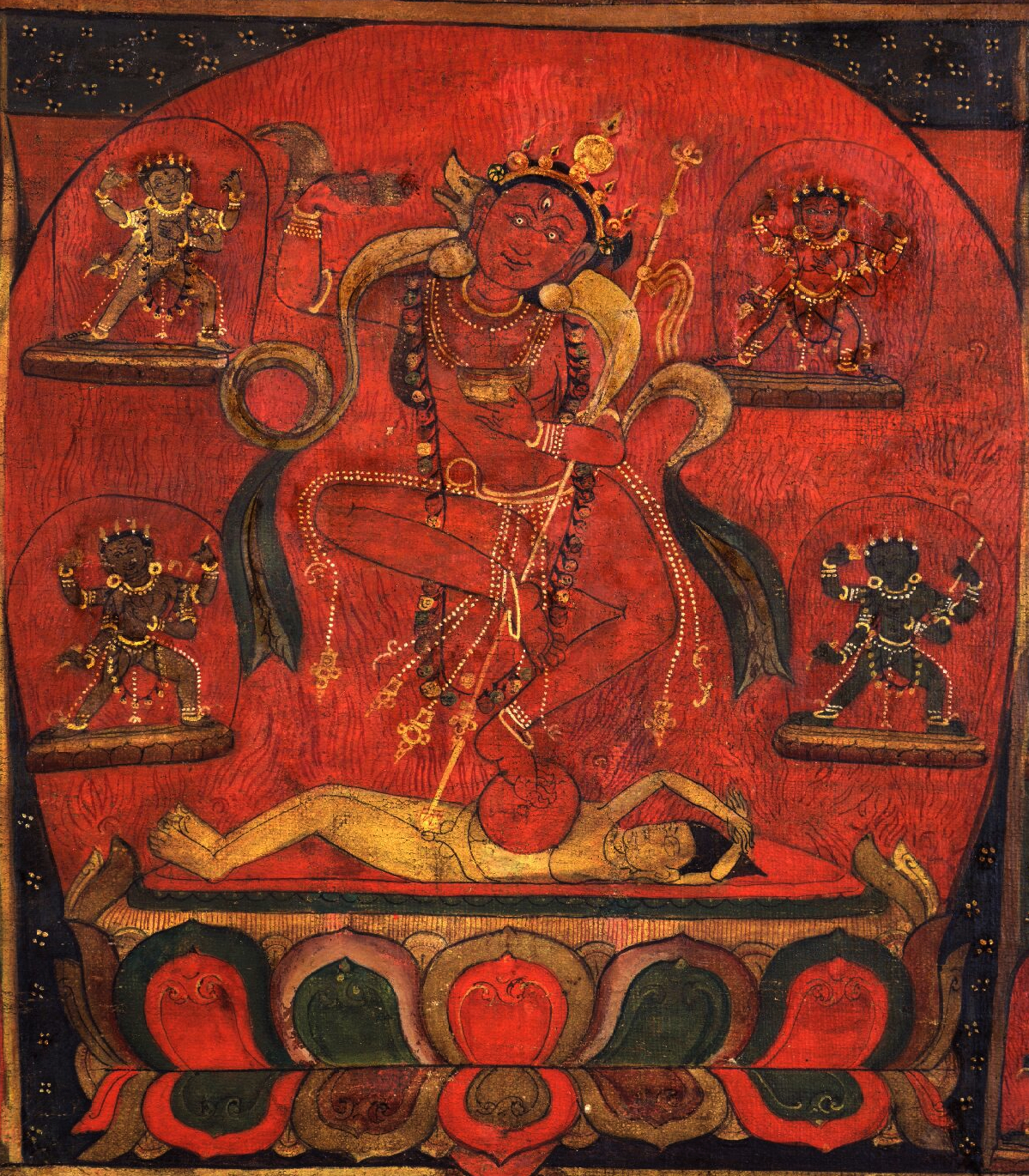Biography and autobiography in Tibet are important sources for both education and inspiration. Tibetans have kept such meticulous records of their teachers that thousands of names are known and discussed in a wide range of biographical material. All these names, all these lives—it can be a little overwhelming. The authors involved in the Treasury of Lives are currently mining the primary sources to provide English-language biographies of every known religious teacher from Tibet and the Himalaya, all of which are organized for easy searching and browsing. Every Tuesday on the Tricycle blog, we will highlight and reflect on important, interesting, eccentric, surprising and beautiful stories found within this rich literary tradition. This week’s post summarizes the biography of Sonam Peldren by Suzanne Bessenger on the Treasury of Lives.
Sonam Peldren
Often all that we know about a person is derived from a single source. As with all life writing, we have to read our sources carefully and reflect on the motivation of the author in order to distinguish between historical veracity and possible fabrications. When all we have is one source, we aren’t able to check against other accounts to clarify the author’s motivation. Sonam Peldren, a 13th- or 14th-century female mystic from central Tibet, herself returned from the grave to chide the author of her biography, her husband, for exploiting her memory for his own gain.

Sonam Peldren was born in an earth male-dragon year—either 1268 or 1326—in the Changtang region of Tibet, near Driru. She was given the name of Gego, which was changed to Sonam Peldren some time after her marriage at the age of 16. Her father had selected a husband for her, a scribe in the service of a wealthy family, but she rejected him in favor of a nomad named Rinchen Pel.
The couple lived as nomads in central and then eastern Tibet, and had four children. In the biography, Rinchen Pel records a number of miracles and acts of significant generosity, all of which went unrecognized by the family’s nomadic group. For example, Sonam Peldren gave away nearly all her clothing, opting to live in a simple cotton garment without shoes, even as her companions suffered from frostbite. The miracles he records include a time when she tunneled through snow to quickly reach the far side of a mountain pass while the other members of the group had to complete an arduous trek, and pulling a yak out of a frozen river by its tail. In all cases the members of the nomadic group failed to recognize her deeds.
Around the age of 43, Sonam Peldren started to have dreams and visions of her death. She began to give Rinchen Pel religious instruction, telling him that she was in fact an emanation of the deity Vajravarahi (Vajra Sow), or Dorje Pakmo in Tibetan, and that following her death relics would be found in her cremation ashes. Her teachings, which took the form of spontaneous songs, concerned both basic Buddhist doctrines of impermanence and non-attachment, as well as esoteric teachings such as Mahamudra. All this despite never having received any formal religious education—a point that her critics made both during her life and after her death.
On the predicted day of Water Mouse Year (1312 or 1372), Sonam Peldren declared that she was ready to die, and a series of miracles then unfolded: she saw mandalas of deities in the sky, her body flew into space, glowed with white light, and then rested on the earth in meditation pose. When Rinchen Pel wiped away a red dot and a white dot from her nose with a flat rock, images of a red sow appeared. Dozens of relics were then found in her ashes.
It is here that things get particularly interesting. Despite all the miracles, Rinchen Pel’s claims about his wife’s exalted status were routinely dismissed. According to his account, some months after her death she returned in a vision to give him a series of teachings and to answer questions such as how she was able to teach doctrine when she had never been educated. She also chastised him for misusing her relics and for letting other people’s doubts diminish his mission of promoting her legacy.
Rinchen Pel had enough success that Sonam Peldren was later included in a list of pre-incarnations of the prominent female master Chokyi Drolma, the First Samding Dorje Pakmo (1422–1467). A nunnery now exists on the site of her death, where murals depict scenes from her life as told by Rinchen Pel.